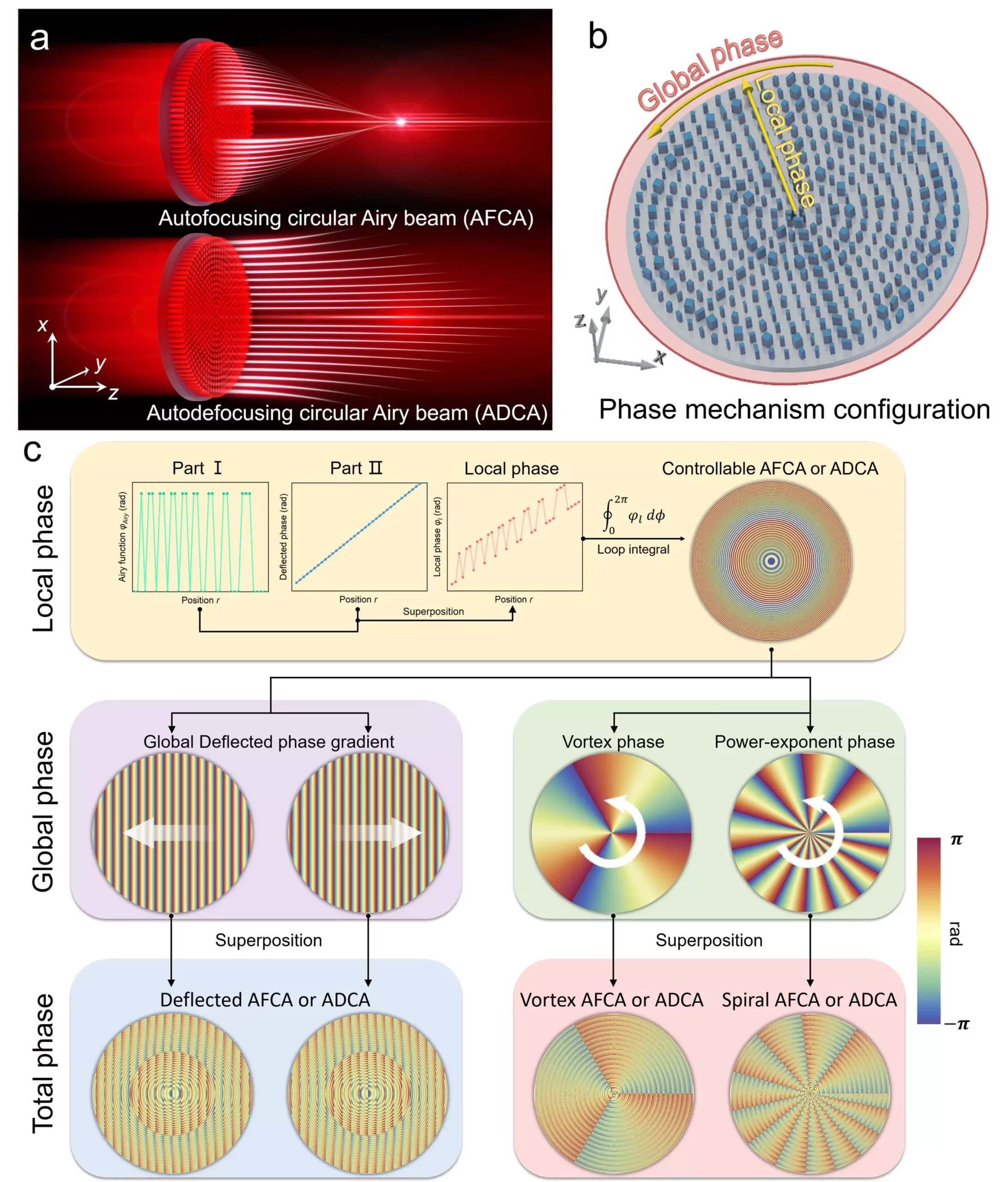The manipulation of light waves has been a topic of significant interest in the scientific community for decades. One of the challenges faced by scientists is the phenomenon of light diffraction, where light beams spread out as they propagate, impacting the transmission of energy and information. In recent years, there have been remarkable advancements in controlling the structure of light to minimize diffraction effects and maintain the shape and direction of light beams.
In the late 1970s, Berry and his colleagues introduced the concept of Airy beams (ABs), which demonstrated self-acceleration and self-bending without diffraction. Subsequently, in 1987, J. Durnin introduced Bessel beams (BBs), which are solutions to the wave equation capable of suppressing diffraction. These breakthroughs have played a crucial role in advancing both fundamental optics and practical applications in the field of light manipulation.
Traditional devices for modulating non-diffracting light fields have encountered challenges such as bulkiness, low resolution, and difficulty encoding phase profiles. The emergence of metasurfaces has revolutionized optical technology by utilizing nanoscale antenna arrays to miniaturize devices and achieve multidimensional control over light fields through birefringence. This advancement has been instrumental in enabling the development of next-generation photonic integrated platforms.
A recent breakthrough in the field of optics involves the reconstruction of non-diffracting light fields along the propagation path. This innovation enabled the observation of circularly Airy beams (CABs) naturally transforming into Bessel beams (BBs) over a distance. By implementing a mechanism of joint local-global phase control, researchers were able to modulate radial phase gradients and encode complex non-diffracting optical fields with precision.
Through the decomposition of the 2D problem into integrating 1D phase functions and superimposing 2D phase functions, researchers illustrated the transformation process using theoretical analysis and ray tracing techniques. This methodology, likened to the “Transformers” of the optical domain, led to the convergence of scattered light into clear Airy beams, which further overlapped to form non-diffracting Bessel beams. Additionally, by leveraging triple birefringent nanoantennas, new techniques for structuring light fields were introduced, expanding the number of light field types to six.
The successful demonstration of high tolerance to manufacturing defects by the developed device signifies a significant advancement in the utilization of non-diffracting light for enhancing the functionality of metasurfaces. This research not only contributes to the evolution of advanced on-chip, nano-optical platforms but also paves the way for innovative manufacturing technologies in the optical field. The implications of this study in driving optical device performance to new heights are substantial and hold promise for future developments in the field of optical technology.


Leave a Reply